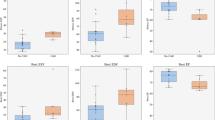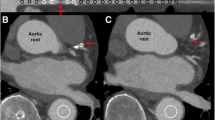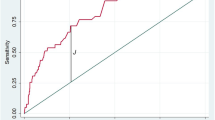Abstract
Background
There have been limited data regarding the value of gated single photon emission computed tomography (SPECT) myocardial perfusion imaging (MPI) for the detection of left main coronary artery disease (CAD).
Methods and Results
We studied 101 patients with angiographic left main CAD (≥50% stenosis) and no prior myocardial infarction or coronary revascularization who underwent gated exercise or adenosine stress technetium 99m sestamibi SPECT MPI. By perfusion assessment alone, high-risk disease with moderate to severe defects (>10% myocardium at stress) was identified in only 56% of patients visually and 59% quantitatively. Absence of significant perfusion defect (≥5% myocardium) was seen in 13% of patients visually and 15% quantitatively. However, by combining visual perfusion data and nonperfusion variables, especially transient ischemic dilation, 83% of patients were identified as high risk.
Conclusions
The findings of this study demonstrate that assessment of perfusion data alone by visual or quantitative SPECT MPI analysis underestimates the magnitude of left main CAD. The combination of perfusion and nonperfusion abnormalities on gated MPI identifies high risk in most patients with left main CAD.
Similar content being viewed by others
References
Noto TJ Jr, Johnson LW, Krone R, et al. Cardiac catheterization 1990: a report of the Registry of the Society for Cardiac Angiography and Interventions (SCA&1). Cathet Cardiovasc Diagn 1991; 24:75–83.
Bruschke AV, Proudfit WL, Sones FM Jr. Progress study of 590 consecutive nonsurgical cases of coronary disease followed 5–9 years. I. Arterographic correlations. Circulation 1973;47:1147–53.
Cohen MV, Gorlin R. Main left coronary artery disease. Clinical experence from 1964–1974. Circulation 1975;52:275–85.
Takaro T, Hultgren HN, Lipton MJ, Detre KM. The VA cooperative randomized study of surgery for coronary arterial occlusive disease II. Subgroup with significant left main lesions. Circulation 1976;54(Suppl):III107–17.
Campeau L., Corbara F, Crochet D, Petitclerc R. Left main coronary artery stenosis: the influence of aortocoronary bypass surgery on survival. Circulation 1978;57:1111–5.
Wynne J, Cohn LH, Collins JJ Jr, Cohn PF. Myocardial revascularization in patients with multivessel coronary artery disease and minimal angina pectoris. Circulation 1978;58(Pt 2):I92–5.
McConahay DR, Killen DA, McCallister BD, et al. Coronary artery bypass surgery for left main coronary artery disease. Am J Cardiol 1976;37:885–9.
Klocke FJ, Baird MG, Lorell BH, et al. ACC/AHA/ASNC Guidelines for the Clinical Use of Cardiac Radionuclide Imaging-Executive Summary. A Report of the American College of Cardiology/American Heart Association Task Force on Practice Guidelines (ACC/AHA/ASNC Committee to Revise the 1995 Guidelines for the Clinical Use of Cardiac Radionuclide Imaging). Circulation 2003;108:1404–18.
Duvernoy CS, Ficaro EP, Karabajakian MZ, Rose PA, Corbett JR. Improved detection of left main coronary artery disease with attenuation-corrected SPECT. J Nucl Cardiol 2000;7:639–48.
Lima RS WD, Goode AR, Siadaty MS, Ragosta M, Beller GA, Samady H. Incremental value of combined perfusion and function over perfusion alone by gated SPECT myocardial perfusion imaging for detection of severe three-vessel coronary artery disease. J Am Coll Cardiol 2003;42:64–70.
Hachamovitch R, Berman DS, Kiat H, et al. Incremental prognostic value of adenosine stress myocardial perfusion single-photon emission computed tomography and impact on subsequent management in patients with or suspected of having myocardial ischemia. Am J Cardiol 1997;80:426–33.
Berman DS, Fourth annual Mario S, Verani MD Memorial Lecture: noninvasive imaging in coronary artery disease: changing roles, changing players. J Nucl Cardiol 2006;13:457–73.
Berman DS, Abidov A, Kang X, et al. Prognostic validation of a 17-segment score derived from a 20-segment score for myocardial perfusion SPECT interpretation. J Nucl Cardiol 2004;11: 414–23.
Berman DS, Kang X, Hayes SW, et al. Adenosine myocardial perfusion single-photon emission computed tomography in women compared with men. Impact of diabetes mellitus on incremental prognostic value and effect on patient management. J Am Coll Cardiol 2003; 41:1125–33.
Berman DS, Hachamovitch R, Kial H, et al. Incremental value of prognostic testing in patients with known or suspected ischemic heart disease: a basis for optimal utilization of exercise technetium-99m sestamibi myocardial perfusion single-photon emission computed tomography [published erratum appears in J Am Coll Cardiol 1996;27:756]. J Am Coll Cardiol 1995;26:639–47.
Hachamovitch R, Hayes SW, Friedman JD, Cohen I, Berman DS. Comparison of the short-term survival benefit associated with revascularization compared with medical therapy in patients with no prior coronary artery disease undergoing stress myocardial perfusion single photon emission computed tomography. Circulation 2003;107:2900–7.
Abidov A, Hachamovitch R, Rozanski A, et al. Prognostic implications of atrial fibrillation in patients undergoing myocardial perfusion single-photon emission computed tomography. J Am Coll Cardiol 2004; 44:1062–70.
Matzer L, Kiat H, Wang FP, et al. Pharmacologic stress dual-isotope myocardial perfusion single-photon emission computed tomography. Am Heart J 1994;128:1067–76.
Germano G, Kavanagh PB, Su HT, et al. Automatic reorientation of three-dimensional, transaxial myocardial perfusion SPECT images. J Nucl Med 1995;36:1107–14.
Slomka PJ, Nishina H, Berman DS, et al. Automated quantification of myocardial perfusion SPECT using simplified normal limits. J Nucl Cardiol 2005;12:66–77.
Nishina H, Slomka PJ, Abidov A, et al. Combined supine and prone quantitative myocardial perfusion SPECT: method development and clinical validation in patients with no known coronary artery disease. J Nucl Med 2006;47:51–8.
Germano G, Kiat H, Kavanagh PB, et al. Automatic quantification of ejection fraction from gated myocardial perfusion SPECT: J Nucl Med 1995;36:2138–47.
Sharir T, Kang X, Germano G, et al. Prognostic value of poststress left ventricular volume and ejection fraction by gated myocardial perfusion SPECT in women and men: gender-related differences in normal limits and outcomes. J Nucl Cardiol 2006;13:495–506.
Sharir T, Bacher-Stier C, Dhar S, et al. Identification of severe and extensive coronary artery disease by postexercise regional wall motion abnormalities in Tc-99m sestamibi gated single-photon emission computed tomography. Am J Cardiol 2000;86:1171–5.
Mazzanti M, Gemano G, Kial H, et al. Identification of severe and extensive coronary artery disease by automatic measurement of transient ischemic dilation of the left ventricle in dual-isotope myocardial perfusion SPECT. J Am Coll Cardiol 1996;27:1612–20.
Abidov A, Bax JJ, Hayes SW, et al. Integration of automatically measured transient ischemic dilation ratio into interpretation of adenosine stress myocardial perfusion SPECT for detection of severe and extensive CAD. J Nucl Med 2004;45:1999–2007.
Abidov A, Hachamovitch R, Hayes SW, et al. Prognostic impact of hemodynamic response to adenosine in patients older than age 55 years undergoing vasodilator stress myocardial perfusion study. Circulation 2003;107:2894–9.
Azarbal B, Hayes SW, Lewin HC, Hachamovitch R, Cohen I, Berman DS. The incremental prognostic value of percentage of heart rate reserve achieved over myocardial perfusion single-photon emission computed tomography in the prediction of cardiac death and all-cause mortality: superiority over 85% of maximal age-predicted heart rate. J Am Coll Cardiol 2004;44: 423–30.
Siddiqui TS, Dawn B, Stoddard MF. Hypotension during dobutamine stress transesophageal echocardiography: relationship with provoked left ventricular obstruction. J Am Soc Echocardiogr 2006;19:1144–9.
Yap LB, Arshad W, Jain A, Kurbaan AS, Garvie NW. Significance of ST depression during exercise treadmill stress and adenosine infusion myocardial perfusion imaging. Int J Cardiovasc Imaging 2005;21:253–8, discussion 259-60.
Berman DS, Shaw LJ, Hachmovitch R, et al. Comparative use of radionuclide stress testing, coronary artery calcium scanning, and noninvasive coronary angiography for diagnostic and prognostic cardiac assessment. Semin Nucl Med 2007;37:2–16.
Maddahi J, Abdulla A, Garcia EV, Swan HJ, Berman DS. Noninvasive identification of left main and triple vessel coronary artery disease: improved accuracy using quantitative analysis of regional myocardial stress distribution and washout of thallium-201. J Am Coll Cardiol 1986;7:53–60.
Nygaard TW, Gibson RS, Ryan JM, Gascho JA, Watson DD, Beller GA. Prevalence of high-risk thallium-201 scintigraphic findings in left main coronary artery stenosis: comparison with patients with multiple- and single-vessel coronary artery disease. Am J Cardiol 1984;53:462–9.
Rehn T, Griffith LS, Achuff SC, et al. Exercise thallium-201 myocardial imaging in left main coronary artery disease: sensitive but not specific. Am J Cardiol 1981;48:217–23.
Aarnoudse WH, Botman KJ, Pijls NH. False-negative myocardial scintigraphy in balanced three-vessel disease, revealed by coronary pressure measurement. Int J Cardiovasc Intervent 2003;5:67–71.
Ragosta M, Bishop AH, Lipson LC, et al. Comparison between angiography and fractional flow reserve versus single-photon emission computed tomographic myocardial perfusion imaging for determining lesion significance in patients with multivessel coronary disease. Am J Cardiol 2007;99:896–902.
Author information
Authors and Affiliations
Corresponding author
Additional information
This study was presented in part at the American College of Cardiology 56th Annual Scientific Session, March 24–27, 2007, New Orleans, La.
This work was supported in part by grants from Bristol-Myers Squibb Medical Imaging, Billerica, Mass, and Astellas, Deerfield, Ill.
Rights and permissions
About this article
Cite this article
Berman, D.S., Kang, X., Slomka, P.J. et al. Underestimation of extent of ischemia by gated SPECT myocardial perfusion imaging in patients with left main coronary artery disease. J Nucl Cardiol 14, 521–528 (2007). https://doi.org/10.1016/j.nuclcard.2007.05.008
Received:
Accepted:
Issue Date:
DOI: https://doi.org/10.1016/j.nuclcard.2007.05.008




